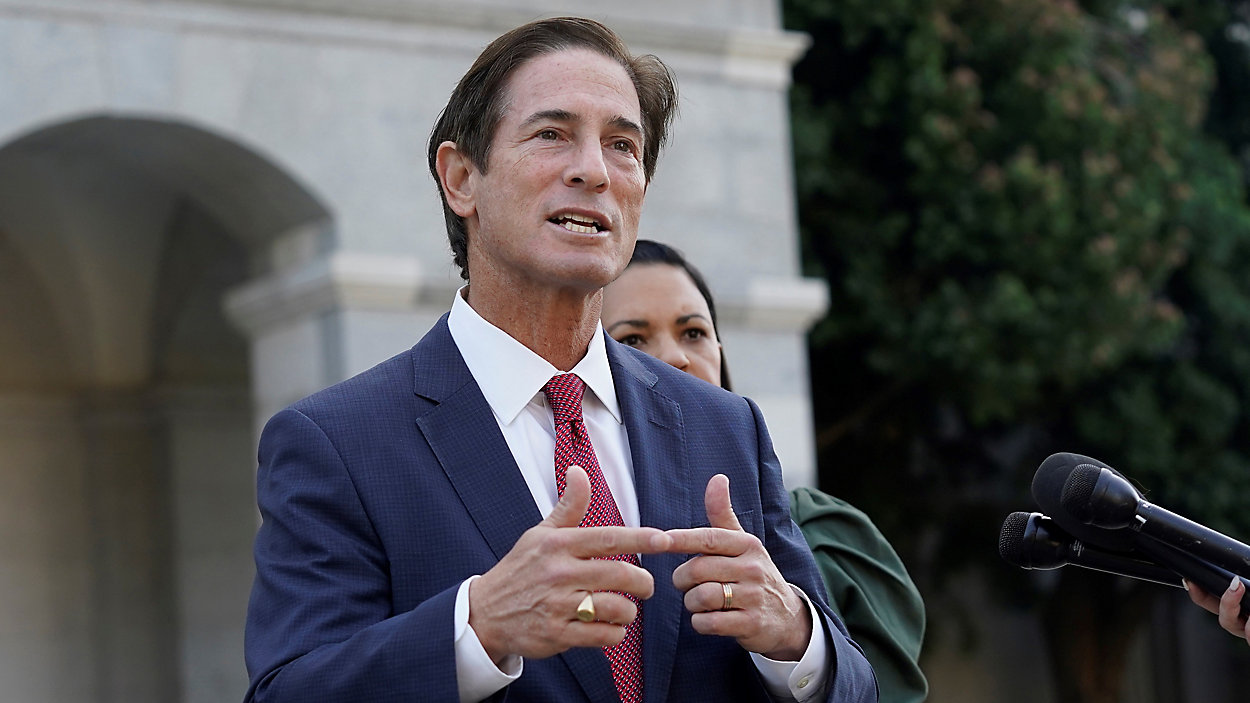It may be true that lovers of liberty, originally steeped in society’s preferred form of social democracy, must travel along the spectrum of the state via small (“minimal”) before reaching the conclusion that the state must go. But logically, this is not the case. To cure cancer, it is not necessary to reduce the size of a tumor bit by bit. The cure is to remove it. Similarly, if a rock upsets the flow of a stream, the solution is not to change the size or shape of the rock, to make it more streamlined, but to simply remove it.
This logic seems impossible to recognize for those who have already adopted the minarchist position. Usually hiding behind questions like “but how would it work,” minarchists cannot get their heads around the meaning of anarchism. To them, as to any statist, without the state, society would immediately degenerate into a Hobbesian bellum omnium contra omnes (“war of all against all”). The assumption, which cannot be questioned, is that some form of control or supervised order is necessary for people to get along, solve problems, or coordinate their actions.
Two issues in particular stir minarchists’ ire and they are equally illustrative of the statism that burdens minarchists. One is the alternative of anarchism or statelessness and the other is intellectual property.
Anarchism as a Threat
Minarchists tend to have two responses to the anarchist: they either angrily dismiss it because “it cannot work” or—with a calmer temperament—claim that it’s something to discuss after “we” have collaborated to cut back on the state’s size.
The former tends to lean heavily on the rhetorical request that the anarchists come up with an alternative system to the state’s supposedly guaranteed natural rights. This makes the error of assuming that freedom needs a plan or blueprint, that it has to be shepherded and supervised. Granted, the “minimal” state isn’t shepherding or controlling people to the degree of the contemporary welfare-warfare state, but it does impose a monopoly of violence (you are not allowed to compete with it) and its “one stop shop” enforcement of enumerated rights often referred to as “objective” to make them seem unassailable (you are not free to enforce or establish your own rights).
There are many errors with this view, but primary among them is the statist belief that there needs to be one system with centralized enforcement. All else is assumed to be chaos.
The latter, that the question of the state should be left for when the minarchist state has been achieved, assumes that there is greater significance in magnitude than in principle. Or, to use the same analogy, that the difference between a big and small tumor is greater than tumor and no tumor. It may be true that a small tumor is a lesser threat to one’s health than a big one, but both are indicative of the same cancer. It makes no sense to leave removal of the tumor off the table until the tumor has been reduced to the preferred size.
Minarchists will reject the analogy, however, because to them the state is not akin to a tumor. The large state is, but the small state is not. They are desperate to maintain that the “real” and important difference lies between states of different sizes, not whether there is one. To make this appear reasonable, they assert that anarchism, or the voluntary cooperation of people without an authority with the monopoly of violence, is simply impossible. This also helps keep them oblivious to the many historical examples of flourishing and lasting anarchist societies (ancient Ireland, Viking Iceland, Cospaia, Free Frisia, etc.) and the many writings of how it might work in the modern-day West.
Their focus on effecting change through political means acting within and through the state also makes it appear as though everything should be assessed on some measure of the state’s extent. From their perspective, then, the difference between a 10 percent state and a 50 percent state is greater than between 10 percent and 0 percent. They completely fail to understand that the principal difference is between none and some, not between big and small. Anarchists correctly observe that the important issue of health is whether one is sick, not on a scale of how sick one is.
Intellectual Property
Minarchists respond with similar ire to the proposal that intellectual property be abandoned, which anarchists necessarily favor. So-called intellectual property rights are state-granted monopoly privileges, similar to the guilds of old, to the supposed creator of an idea. Whether in the form of patents, copyrights, or trade secrets, the elevation of “IP” to the status of private property hinges on the state.
Without the state, one can certainly find ways to make the ideas behind new products difficult or costly to copy, sell books under contractual prohibition to copy and distribute, or protect one’s secrets (like the recipe for Coca-Cola). Would this not be costly? Yes, in most cases. Would it not be difficult to enforce such contracts? Yes, it could be. The “benefit” of state-granted IP is that the cost of upholding those “rights” is socialized: the state distributes much of the creator’s costs onto the general public. It is at the same time a limitation of open competition and externalization of costs.
In contrast to “intellectual” property, private property involves scarce things. This means those things have limited uses and that one use contradicts or disturbs another, which causes conflict. Private property is a social means to establish who among conflicting parties is in the right with respect to the owned thing. But if I have an idea for a product or story, someone else having the same idea—or even copying mine—has no impact on my use of it. Ideas are non-scarce and non-rivalrous.
The intellectual property argument is not, like private property—an institution for avoiding or settling conflicts—but boils down to a presumed right to remuneration. If others are allowed to copy “my” ideas, they can do a better job putting them to use for consumers and therefore undermine my monopoly rents. The whole thing depends on the state’s granted monopoly. It is statism through and through.
Summing Up
The aforementioned issues have one thing in common: the state. They also have in common that the state is assumed to be necessary. Without the state, how can we guarantee that people have a certain set of rights? And how can we guarantee that people with ideas profit from them?
The questions are, at best, ridiculous. It is hardly the case that the state does a good job protecting rights (if anything, it violates rights). There is no reason to think a “minimal” monopoly of violence would generously, altruistically, and flawlessly protect a certain set of rights. Even minarchists would not expect the state to be very effective in producing anything else, but they pretend that the state—if only kept to their preferred size—will (not grow and) be effective, efficient, and a net social benefit.
The second question is in fact a rejection of entrepreneurship and, therefore, the market. It is generally not the idea that makes a profitable business but the specific implementation of it. In fact, new ideas can be complete failures whereas old and well-known ideas can make a very profitable business if reimagined and repositioned. “IP” makes sure society is stuck with whatever the monopolist creates rather than let consumers choose the higher-valued implementation.
What is the core to these issues that minarchists feel such urgency to defend? They both depend on the myth of the state as a guarantee for an orderly and working society. This myth is rejected by minarchists for the large state, but they desperately hold on to it for the smaller state. The reason for their ire is not that others have different ideas, but that the anarchist critique points directly at this cognitive dissonance. There is little logic that can uphold it, so lashing out at those disagreeing is the only defense.


























